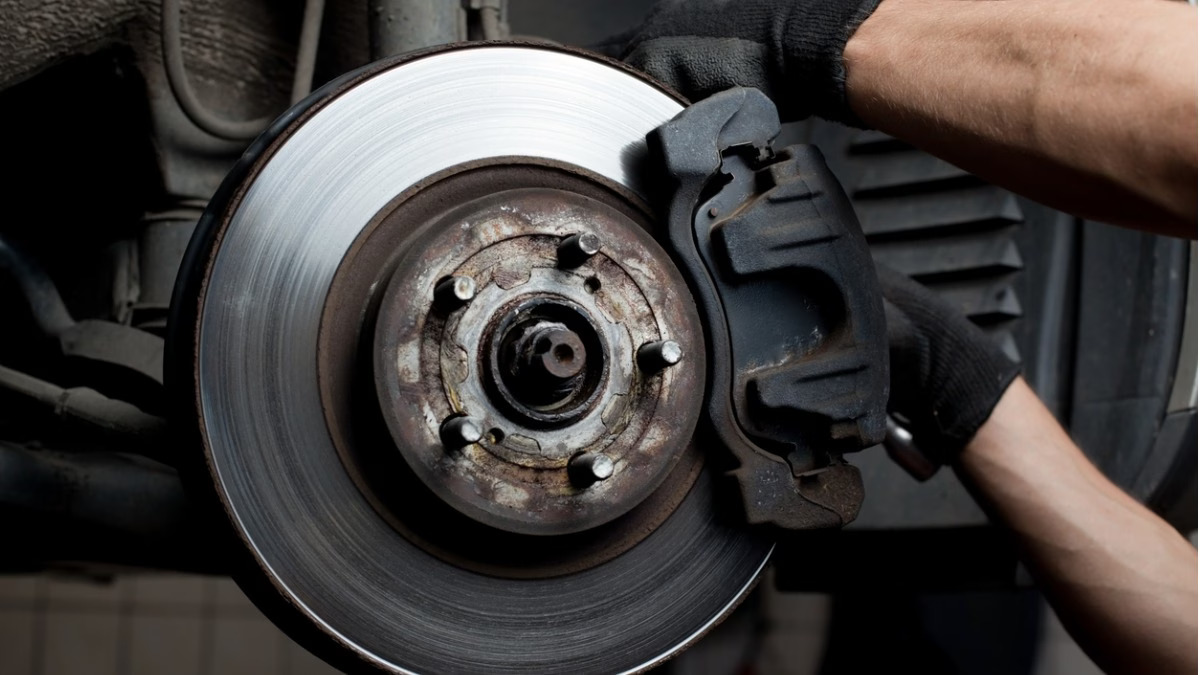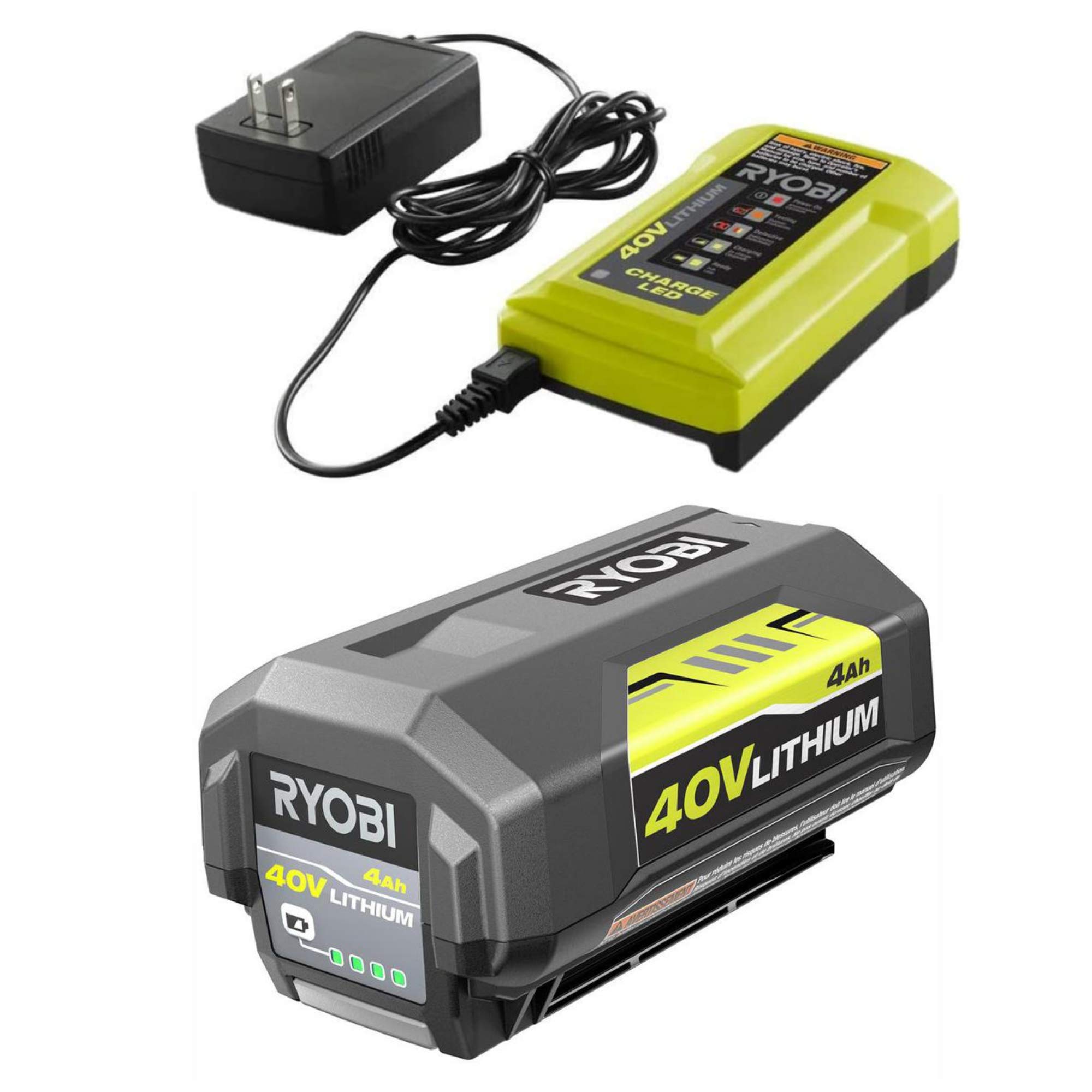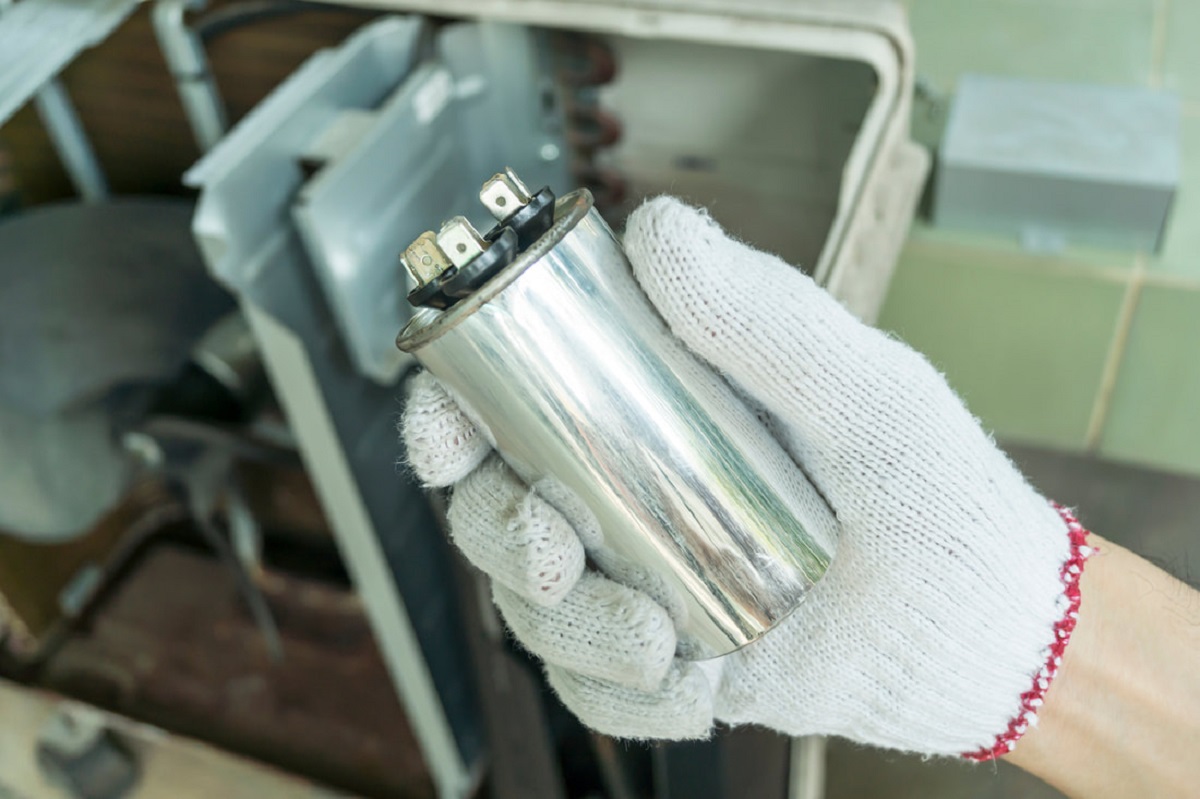

Articles
How Do You Know When Calipers Are Bad
Modified: December 7, 2023
Learn how to tell when calipers are bad and need replacement. Read our informative articles to understand the signs and symptoms.
(Many of the links in this article redirect to a specific reviewed product. Your purchase of these products through affiliate links helps to generate commission for Storables.com, at no extra cost. Learn more)
Introduction
Calipers are an essential part of a vehicle’s braking system, responsible for applying pressure to the brake pads and squeezing them against the rotors to slow down or stop the vehicle. Over time, calipers can wear out or develop issues that affect their performance, compromising the safety of the vehicle and its occupants. Therefore, it is important to know the signs of bad calipers and understand when they need to be replaced.
In this article, we will discuss the common signs of bad calipers, the causes of these problems, how to diagnose and inspect them, and the steps to replace them. Additionally, we will highlight the importance of maintaining calipers to ensure safety on the road and extend the lifespan of other brake components.
So, if you have noticed any issues with your vehicle’s braking system or simply want to stay informed about proper brake maintenance, keep reading to learn how to identify and address bad calipers.
Key Takeaways:
- Regular maintenance and prompt replacement of bad calipers are crucial for ensuring safety on the road and extending the lifespan of brake components.
- Understanding the signs and causes of bad calipers, along with proper diagnosis and replacement procedures, empowers vehicle owners to maintain a reliable braking system.
Read more: How Do You Know If Pomegranate Seeds Are Bad
Signs of Bad Calipers
Recognizing the signs of bad calipers is crucial for ensuring the safety and performance of your vehicle’s braking system. Here are five common signs that indicate your calipers may be in need of replacement or repair:
- Uneven Brake Pad Wear: One of the most noticeable signs of bad calipers is uneven brake pad wear. If you notice that the brake pads on one side of the vehicle are significantly more worn down than the other side, it could indicate that the caliper is not applying equal pressure to both sides of the rotor.
- Leaking Brake Fluid: Another red flag is the presence of brake fluid around the caliper. A leaking caliper can result in a loss of brake fluid, leading to reduced braking performance and potential safety hazards. If you notice any signs of brake fluid leakage, such as fluid stains or a decrease in brake fluid levels, it is essential to inspect the calipers promptly.
- Sticky Brake Caliper: A sticky or seized brake caliper can cause uneven braking, as it fails to retract the brake pads fully. This can result in excessive heat generation, accelerated brake pad wear, and reduced braking efficiency. If you experience difficulty in releasing the brake pedal or notice a burning smell after driving, it is likely that one or more calipers are sticking.
- Spongy Brake Pedal: A soft or spongy brake pedal is often a sign of air or moisture in the brake lines, which can be caused by a faulty caliper. If the caliper’s piston or seal is damaged, it can allow air to enter the brake system, leading to a loss of hydraulic pressure and a spongy brake pedal feel.
- Pulling to One Side: If your vehicle pulls to one side when braking, it could indicate a caliper problem. A seized or unevenly operating caliper can apply more pressure on one side, causing the vehicle to veer off course when braking. This is not only inconvenient but also poses a safety risk, as it affects the vehicle’s stability and control.
If you notice any of these signs, it is crucial to have the calipers inspected and repaired or replaced as soon as possible. Ignoring these issues can lead to further damage to the braking system, compromised safety, and more expensive repairs down the line.
Causes of Caliper Problems
Caliper problems can arise from various factors, ranging from external factors to lack of proper maintenance. It is essential to understand these causes to prevent or address caliper issues effectively. Here are some common causes of caliper problems:
- Corrosion: One of the primary culprits behind caliper problems is corrosion. Over time, exposure to moisture, road salt, and other environmental elements can cause the caliper components to corrode. Corrosion can result in the caliper sticking, leading to reduced braking performance and potential damage.
- Dirt and Debris: Accumulation of dirt, dust, and debris can also impact the proper functioning of calipers. When debris enters the caliper assembly, it can cause the piston or slide pins to become restricted or stuck. This restricts the movement of the caliper and can lead to uneven brake pad wear or sticking calipers.
- Brake Fluid Contamination: Contaminated brake fluid can also contribute to caliper problems. Brake fluid can become contaminated due to moisture absorption, which can lead to corrosion and internal damage to the caliper. Additionally, if the brake fluid is not regularly flushed and replaced, it can become degraded and lose its effectiveness, affecting the caliper’s performance.
- Lack of Maintenance: Neglecting regular maintenance can exacerbate caliper problems. Failure to inspect and lubricate caliper components, replace worn brake pads, or perform routine brake system checks can lead to caliper issues. It is important to adhere to manufacturer-recommended maintenance schedules to keep the calipers in optimal condition.
Understanding the causes of caliper problems can help you take necessary preventive measures to maintain the integrity of your vehicle’s braking system. Regular inspection, cleaning, and maintenance can go a long way in preserving the longevity and performance of the calipers.
Diagnosis and Inspection
In order to determine if your calipers are indeed the source of the braking issues, a thorough diagnosis and inspection are necessary. Here are three methods commonly used to assess the condition of calipers:
- Visual Inspection: A visual inspection is the first step in diagnosing caliper problems. Examine the calipers for any signs of damage, such as leaks, corrosion, or sticking. Inspect the brake pads for uneven wear patterns, as this could indicate a caliper issue. Additionally, check the brake lines for leaks or damage.
- Brake Performance Test: Conducting a brake performance test can help determine if the calipers are functioning properly. Find a safe and open area where you can accelerate and then apply the brakes gently. Observe how the vehicle responds. Any uneven braking, pulling to one side, or spongy brake pedal could indicate caliper problems.
- Brake Fluid Analysis: Analyzing the condition of the brake fluid can provide valuable insights into the health of the calipers. Brake fluid should be clear and free from contaminants. If the fluid appears dark, cloudy, or has debris floating in it, it may be an indication of caliper issues. Additionally, check the brake fluid level to ensure it is within the recommended range.
By performing these diagnostic tests and inspections, you can gain a better understanding of the condition of your calipers and identify any underlying issues that may require attention. Remember, if you are unsure or uncomfortable with diagnosing and inspecting the calipers yourself, it is always advisable to seek assistance from a qualified mechanic or automotive professional.
When checking for bad calipers, look for signs such as uneven brake pad wear, leaking brake fluid, or a soft brake pedal. Also, listen for any unusual noises while braking. If you notice any of these signs, it’s time to have your calipers inspected or replaced.
How to Replace Bad Calipers
If you have determined that your calipers need to be replaced, it is important to follow the proper steps to ensure a successful and safe installation. Here is a step-by-step guide on how to replace bad calipers:
- Gathering the Necessary Tools and Materials: Before you begin, gather all the tools and materials you will need for the caliper replacement. This typically includes a wrench or socket set, brake fluid, a brake bleeder kit, new calipers, and new brake pads.
- Preparing the Vehicle: Start by parking the vehicle on a level surface and engaging the parking brake. Then, open the hood and locate the brake fluid reservoir. Using a turkey baster or a syringe, remove some of the brake fluid from the reservoir to prevent overflow during the caliper replacement process.
- Removing the Old Caliper: Begin by loosening the lug nuts on the wheel where the caliper needs to be replaced. Raise the vehicle using a jack, secure it with jack stands, and remove the wheel. Locate the caliper and remove the bolts or pins that hold it in place. Carefully detach the brake line from the caliper, being cautious not to damage the line or lose any brake fluid.
- Installing the New Caliper: Take the new caliper and position it in place of the old caliper. Secure it with the bolts or pins and tighten them to the manufacturer’s specifications. Connect the brake line to the new caliper, making sure it is securely fastened. If needed, transfer any necessary components from the old caliper to the new one, such as brake pads or clips.
- Bleeding the Brake System: Bleeding the brake system is essential to remove any air trapped in the lines. To do this, locate the brake bleeder valve on the caliper. Attach a clear plastic hose to the valve and submerge the other end in a container filled with brake fluid. Have a helper press the brake pedal slowly and hold it down while you open the bleeder valve to release the air. Close the valve and repeat this process until all air bubbles are cleared, starting from the furthest caliper and ending with the closest one to the master cylinder.
Once you have completed these steps, reinstall the wheel, lower the vehicle, and double-check that all connections are secure. Finally, refill the brake fluid reservoir to the appropriate level and test the brakes to ensure they are functioning correctly.
If you are uncertain about any of these steps or feel uncomfortable performing the replacement yourself, it is advisable to seek the assistance of a professional mechanic.
Read more: How Do You Know If A Surge Protector Is Bad
Importance of Maintaining Calipers
Maintaining the calipers in your vehicle is not only essential for the proper functioning of your braking system but also plays a crucial role in ensuring your safety on the road. Here are two key reasons highlighting the importance of maintaining calipers:
- Ensuring Safety on the Road: Calipers are responsible for applying the necessary pressure to the brake pads, allowing them to engage with the rotors and stop the vehicle. If the calipers are worn, damaged, or not functioning properly, it can significantly affect the overall braking performance. This can result in longer stopping distances, reduced control, and an increased risk of accidents. Regular maintenance and inspections can help detect and address any caliper issues before they compromise your safety on the road.
- Extending the Lifespan of Brake Components: Calipers that are not properly maintained can cause excessive wear and tear on other brake components, such as brake pads and rotors. For instance, if a caliper is sticking or not releasing fully, it can lead to uneven brake pad wear, premature pad replacement, and the need for rotor resurfacing or replacement. By regularly inspecting, cleaning, and lubricating the calipers, you can extend the lifespan of these critical brake components, ultimately reducing maintenance costs and ensuring optimal performance.
Proper maintenance of calipers includes routine inspections, cleaning, lubrication, and addressing any issues promptly through repair or replacement. It is also crucial to follow manufacturer-recommended maintenance schedules and guidelines. Additionally, using quality brake components, such as OEM or high-quality aftermarket parts, can contribute to the longevity and performance of the calipers.
Remember, even if your brakes feel fine, it is still important to include caliper maintenance as part of your regular vehicle maintenance routine. Regular inspections and proactive maintenance can not only ensure your safety but also save you from costly repairs and potential brake failures in the future.
Conclusion
Calipers play a critical role in the proper functioning of a vehicle’s braking system. Identifying signs of bad calipers and addressing them promptly is essential for maintaining safety on the road and extending the lifespan of brake components. Uneven brake pad wear, leaking brake fluid, a sticky brake caliper, a spongy brake pedal, and pulling to one side are all indicators that your calipers may be in need of replacement or repair.
Causes of caliper problems can range from corrosion and dirt accumulation to brake fluid contamination and lack of maintenance. Understanding these causes can help prevent caliper issues and maintain the integrity of the braking system. Regular diagnosis and inspection, including visual inspection, brake performance tests, and brake fluid analysis, can help assess the condition of the calipers and identify any underlying problems.
Replacing bad calipers involves gathering the necessary tools and materials, preparing the vehicle, removing the old caliper, installing the new caliper, and bleeding the brake system. Proper installation is crucial to ensure the calipers function optimally and provide reliable stopping power. Regular maintenance of calipers is equally important, as it ensures safety on the road and extends the lifespan of brake components. By adhering to maintenance schedules and performing routine inspections, cleaning, and lubrication, you can preserve the longevity and performance of your calipers.
In conclusion, staying vigilant about the condition of your calipers and taking proactive measures to address any issues is crucial for the safety and performance of your vehicle. Whether it’s replacing bad calipers or maintaining them regularly, investing time and effort into brake system maintenance is an investment in your safety on the road and the longevity of your vehicle’s braking system.
Frequently Asked Questions about How Do You Know When Calipers Are Bad
Was this page helpful?
At Storables.com, we guarantee accurate and reliable information. Our content, validated by Expert Board Contributors, is crafted following stringent Editorial Policies. We're committed to providing you with well-researched, expert-backed insights for all your informational needs.















0 thoughts on “How Do You Know When Calipers Are Bad”